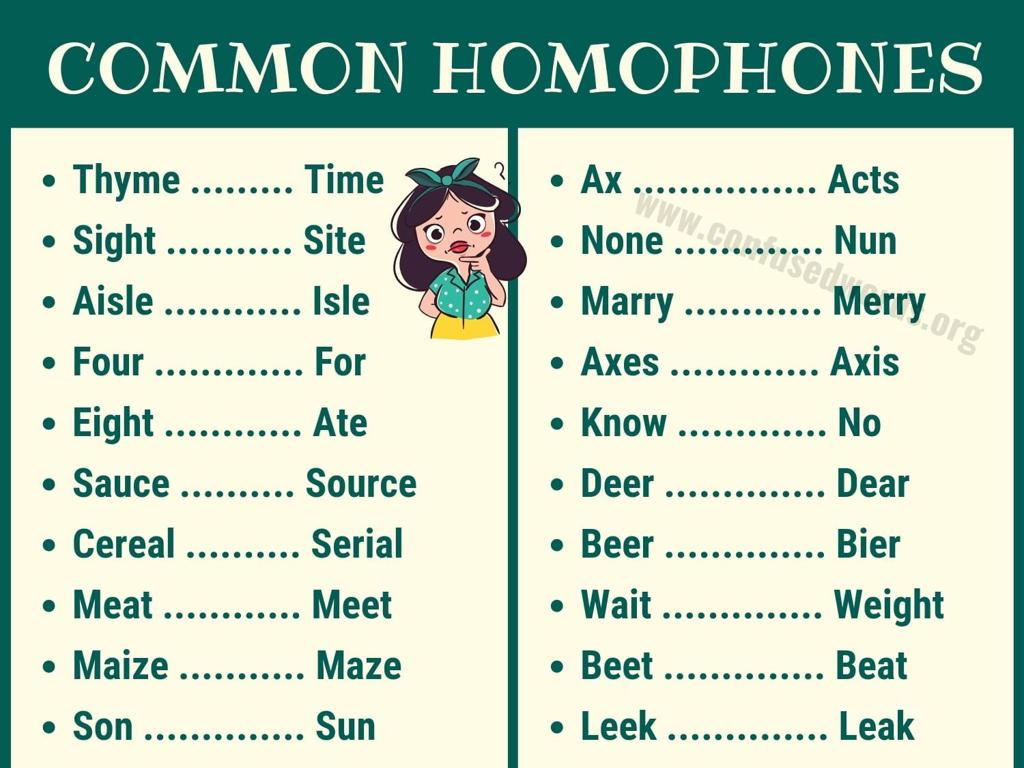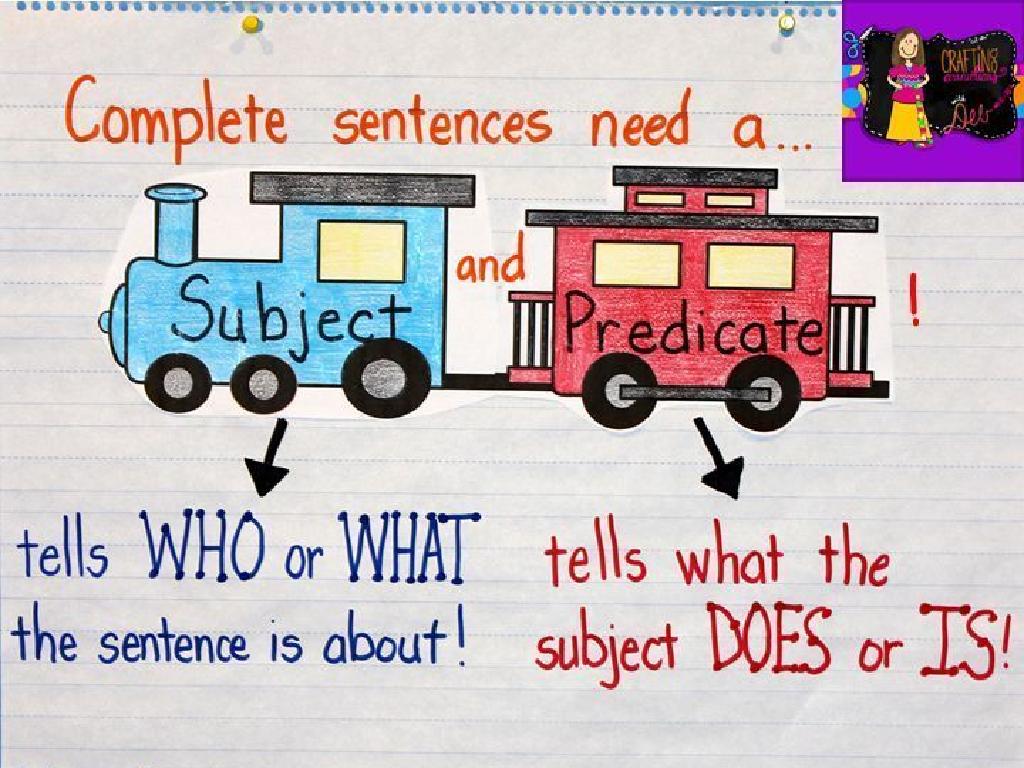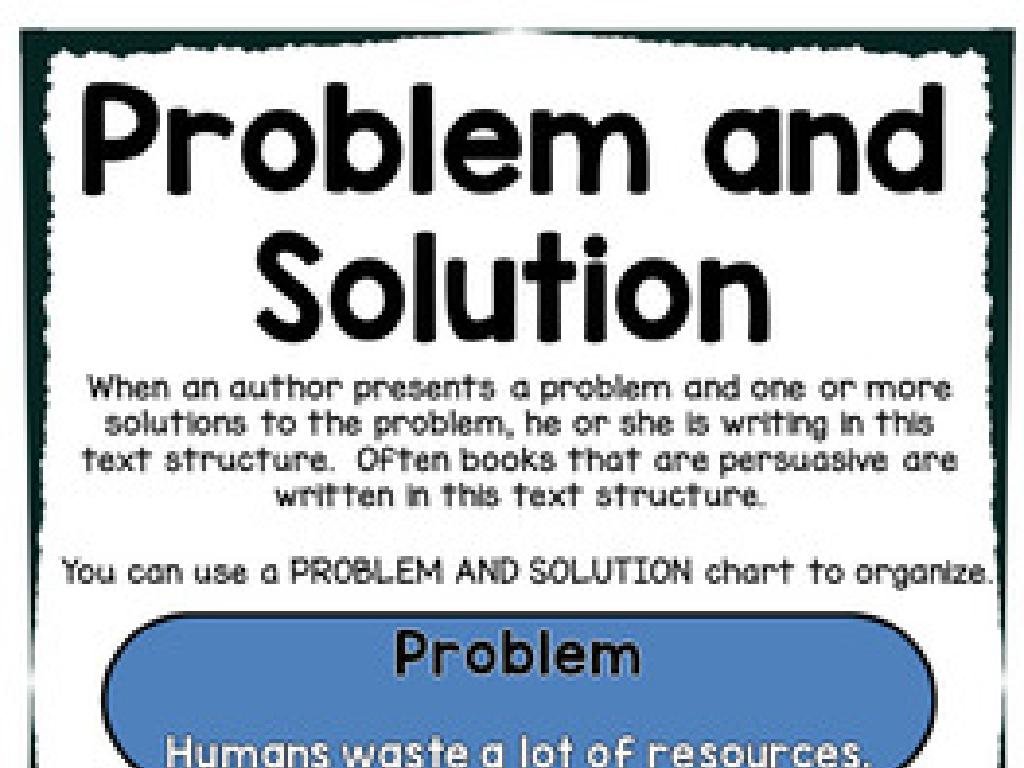Is The Word An Adjective Or Adverb?
Subject: Language arts
Grade: Third grade
Topic: Adjectives And Adverbs
Please LOG IN to download the presentation. Access is available to registered users only.
View More Content
Adjectives vs. Adverbs
– What are adjectives?
– Adjectives describe nouns, like ‘big’ or ‘colorful’.
– What are adverbs?
– Adverbs modify verbs, adjectives, or other adverbs, often ending in ‘-ly’, like ‘quickly’.
– Roles in sentences
– Adjectives tell us ‘which?’, ‘how many?’ Adverbs tell us ‘how?’, ‘when?’, ‘where?’.
– Examples in use
– Adjective: ‘The loud dog barked.’ Adverb: ‘She spoke loudly in the hall.’
|
This slide introduces the basic concepts of adjectives and adverbs to third-grade students. Begin by explaining that adjectives are words that describe nouns (people, places, things, or ideas) and make our sentences more interesting by telling us more about the noun’s size, color, or other qualities. Then, describe adverbs as words that change or add to the meaning of a verb, an adjective, or another adverb, often giving us more detail about how, when, or where something happens. Use simple examples to illustrate the difference, and encourage students to think of their own examples. The goal is to help students recognize adjectives and adverbs in sentences and understand their roles in adding detail and meaning to our communication.
Discovering Adjectives
– Adjectives describe nouns
– Words that give us more information about things (nouns)
– They express ‘what kind’, ‘how many’, or ‘which one’
– ‘What kind’ like ‘fluffy’ cat, ‘how many’ as in ‘three’ dogs, ‘which one’ like ‘that’ ball
– Examples: ‘big’, ‘blue’, ‘five’, ‘happy’
– ‘Big’ elephant, ‘blue’ sky, ‘five’ cookies, ‘happy’ boy
– Practice finding adjectives
|
This slide introduces the concept of adjectives to third-grade students. Adjectives are words that describe or modify nouns, giving more detail about the object or person. They can describe qualities such as size (‘big’), color (‘blue’), quantity (‘five’), or emotion (‘happy’). Use everyday objects and familiar scenarios to help students understand the concept. For instance, describe a classroom object like a ‘red book’ or ‘four desks’. Encourage students to practice by identifying adjectives in sentences and to bring examples from home or their favorite books. This will help them recognize adjectives in different contexts and understand their usage in language.
Exploring Adverbs
– Adverbs describe verbs and more
– Like ‘run quickly’ or ‘very tall’
– They answer ‘how’, ‘when’, ‘where’
– ‘How often’ like ‘always’ or ‘never’
– Examples: ‘quickly’, ‘yesterday’
– ‘Where’ like ‘here’ or ‘everywhere’
– ‘very’ modifies adjectives/adverbs
– ‘Very’ intensifies: ‘very fast’
|
This slide introduces adverbs to third-grade students, explaining their role in a sentence. Adverbs provide additional information about how an action is performed, when or where it happens, and to what degree. Use examples like ‘quickly’ to show how adverbs modify verbs, ‘yesterday’ for time, ‘outside’ for place, and ‘very’ to intensify an adjective or another adverb. Encourage students to think of adverbs they already know and use them in sentences. This will help them understand the concept of adverbs in a practical and engaging way.
Is it an Adjective or an Adverb?
– Discovering adjectives and adverbs
– Analyzing sentences together
– Adjectives modify nouns
– Adjectives describe things, like ‘big’ dog
– Adverbs modify verbs and more
– Adverbs tell us how, like running ‘quickly’
|
This slide is aimed at helping third-grade students differentiate between adjectives and adverbs. Begin by explaining that both adjectives and adverbs are describing words, but they serve different purposes in a sentence. Adjectives are used to describe nouns, which are people, places, things, or ideas. For example, in the phrase ‘the big dog,’ ‘big’ is an adjective that describes the dog. Adverbs, on the other hand, can modify verbs, adjectives, or other adverbs, often telling us how something is done. For instance, ‘quickly’ in ‘running quickly’ is an adverb that describes how the running is being done. Use interactive sentence examples and encourage students to identify adjectives and adverbs within them. This will help solidify their understanding of how these types of words function in sentences.
Adjective or Adverb: Making the Right Choice
– Sentence with a missing word
– Choose: adjective or adverb?
– Is it describing a noun (adjective) or a verb (adverb)?
– Discuss correct choices
– Understand the role of the word in the sentence
– Learn why choices matter
– Grasp the impact of word choice on sentence meaning
|
This interactive slide is designed to engage third-grade students in understanding the difference between adjectives and adverbs. Start by presenting a sentence with a blank space where a word is missing. Ask the students to decide whether the missing word should be an adjective, which describes a noun, or an adverb, which usually describes a verb. After students make their choices, discuss as a class why certain words fit better and how they change the meaning of the sentence. This activity will help students to not only identify adjectives and adverbs but also understand their function and importance in sentence structure. Encourage students to explain their reasoning for their choices to foster critical thinking.
Class Activity: Adjective or Adverb Hunt
– Read a story together in class
– Hunt for adjectives and adverbs
– Look for words that describe things or actions
– List the descriptive words found
– Discuss why they are adjectives or adverbs
– Understand the role of each word in the sentence
|
This interactive class activity is designed to help students identify and differentiate between adjectives and adverbs within the context of a story. Begin by reading a short story aloud, encouraging students to listen carefully. After reading, have the students search for descriptive words within the text and list them. Then, facilitate a discussion on why each listed word is an adjective, which describes nouns, or an adverb, which typically modifies verbs. Provide guidance and examples as needed. For instance, in the sentence ‘The quick brown fox jumps high,’ ‘quick’ and ‘brown’ are adjectives describing the fox, while ‘high’ is an adverb describing how the fox jumps. This activity will enhance students’ understanding of the function of adjectives and adverbs in sentences.
Conclusion: Adjectives vs. Adverbs
– Recap: Adjectives vs. Adverbs
– Adjectives describe nouns, adverbs describe verbs
– Review today’s examples
– Examples: ‘quick’ (adjective) vs. ‘quickly’ (adverb)
– Open floor for questions
– Summarize key points
– Remember: Adjectives for ‘what kind’, adverbs for ‘how’
|
As we wrap up today’s lesson, revisit the main differences between adjectives and adverbs, emphasizing that adjectives are used to describe nouns and pronouns, while adverbs describe verbs, adjectives, and other adverbs. Go over the examples discussed in class to reinforce learning. Encourage students to ask questions if they’re unsure about any part of the lesson. Conclude by summarizing the key points to ensure that students can confidently identify and use adjectives and adverbs in their writing. This review solidifies the day’s learning and prepares them for future lessons on the topic.
Homework: Adjectives and Adverbs
– Complete the adjective/adverb worksheet
– Create sentences with adjectives and adverbs
– Use descriptive words for nouns (adjectives) and verbs (adverbs)
– Share your sentences next class
– Be creative and think about how words describe things and actions
– Practice makes perfect!
|
This homework assignment is designed to reinforce the students’ understanding of adjectives and adverbs. The worksheet will provide them with practice in identifying adjectives and adverbs in a structured format. Encourage students to be creative when they create their own sentences, using adjectives to describe nouns and adverbs to describe verbs or other adverbs. Remind them that adjectives answer questions like ‘Which one?’, ‘What kind?’, and ‘How many?’, while adverbs answer ‘How?’, ‘When?’, ‘Where?’, and ‘To what extent?’. In the next class, students will have the opportunity to share their sentences, which will help build their confidence in using descriptive words and improve their understanding of how adjectives and adverbs function within sentences.






